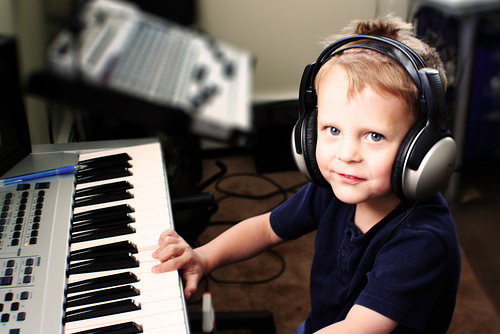Using Routine to Create a Practice Habit
Tuesday, August 27, 2019 by April Davis | tiptuesday
Hi y'all! It's #tiptuesday!
We're going to start with a piano FUNdamental: daily practice. That's right! Daily practice as in every. single. day. Beginner students will see gains in fine motor skill and confidence with just 10-15 minutes a day.

The best time to practice can be anytime of day, but I caution against making it a before bedtime item. As soon as kids get home from school, after chores, after homework, before dinner, immediately following dinner are all good candidates. Consistency in the time of day helps create the routine.
The structure of the practice time will also help create the routine. We teach students to practice in this order: stretch, exercise, play the hard parts of the assigned piece(s), play the piece all of the way through, play for fun.
>>>Free Printable!!!!<<<
Stretching
I get a lot of puzzled looks when I mention stretching. As we grow in our understanding of how to play piano while preventing stress and repetitive strain injuries, it becomes clear that stretching like we do for many other activities is essential for piano as well. Other keys to reducing repetitive strain injuries are practicing proper posture, maintaining relaxation or looseness in the shoulders and wrists, and curving fingers. Students stretch with me at every lesson. Here's a guide for you to help them at home:
Exercise
Every student has an exercise assigned. Presently, most are working on the C Major Scale at this studio. They are playing the 1 octave scale with each hand separately and then playing it with hands together. Exercises are simple activities used to get the fingers and brain working together. For beginners, they are taught by rote so we are not bound by only the notes the student can read.
Play the hard parts three times by three times
And, play them three times SLOWLY, play them three times FAST, and play them three times slowly again. Isolate just 1-4 measures that you stumble over (beginner) or 1-4 lines (intermediate+). You'll find that isolating them makes them easier to play altogether and focusing on playing them fast means that when you play the piece all of the way through you'll no longer hesitate.
Play all the way
Now that you've worked on the hard parts, play your assigned piece(s) all of the way through. The goal is to play your piece exactly as written: tempo, dynamics, expression, etc. But, who says you need to do that while you're practicing? Play it loud one day, play it softly another, play it in slow-mo, play it super fast another. Just play it once or twice. You'll get better everyday and, once you perform the piece for your teacher and play it as written, you'll sound like a pro.
Play for fun
Wrap up your practice time by playing for fun: play an old favorite (or five) or compose a new song. If you have a keyboard, mess with the buttons and change the sound. Add a beat while you play. Just have fun!
Practice should be routine and having the routine will lead to big gains!
Keep calm and practice!
Brought to you by



